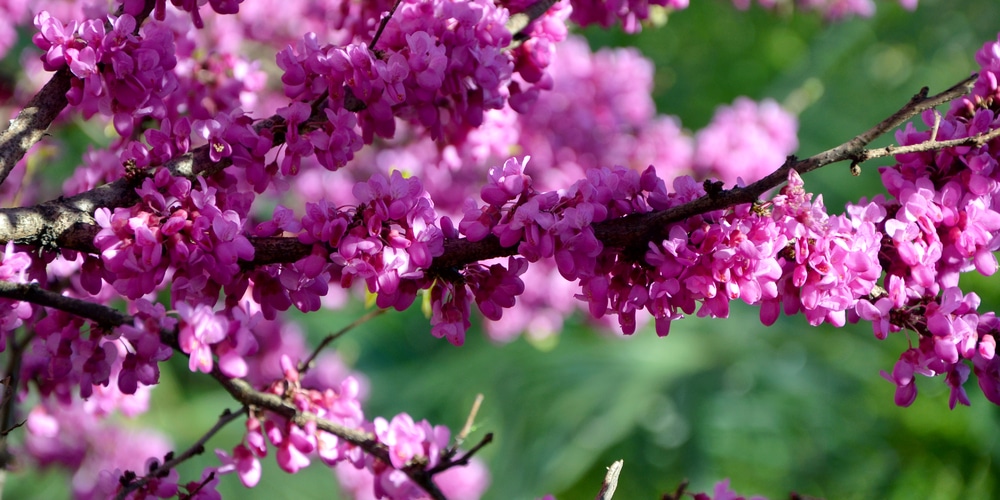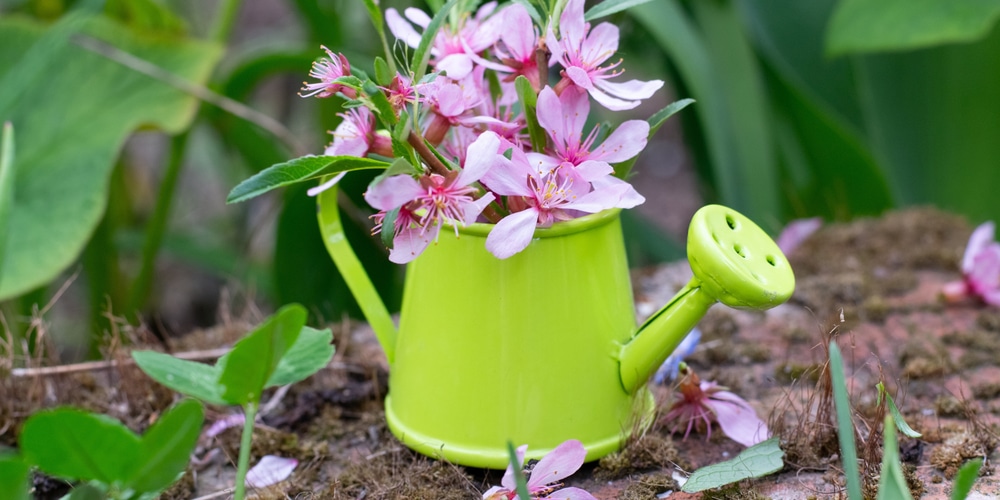Pink Forsythia is an early bloomer, with pink, five-petaled flowers that carry a fragrant almond scent.

| Botanical Name | Abeliophyllum distichum Roseum |
| Common Name | Pink Forsythia |
| Plant Type | Perennial |
| Flower Color | Pale pink flower clusters with an almond scent |
| Size When Mature | 60 inches |
| Bloom Time | Spring |
| Sun Requirements | Full/ Partial Sun |
| USDA Hardiness Zones | 5 to 8 |
| Soil PH Range | Neutral, Acidic, Alkaline |
| Soil Type | Moist, well-drained |
| Water Needs | Medium |
| Native Area | China |
What you Need to Know About Pink Forsythia
Pink Forsythia, or otherwise known as Abeliophyllum ‘Roseum’ is a deciduous shrub species with light pink flowers that appear early spring. As it emerges from dormancy, blooms come first before dark green foliage.
Caring for Pink Forsythia is easy provided you water it well. It’s not affected by most pests and diseases and typically has a long lifespan (around 20 to 50 years). The airy light pink flowers stay around from March to April and give off an unforgettable fragrance.
How to Care for the Pink Forsythia
Here’s everything you need to know about growing and caring for a thriving Pink Forsythia
Light
The ‘Roseum’ species is similar to its Forsythia cousins in that it’s able to adapt to nearly any growing environment. However, the best possible spot to grow Pink Forsythia is where it can get full sun.
Pink Forsythia can thrive in partial sun, or in areas that only get a few hours of direct sunlight daily. To maximize your use of the Pink Forsythia in your garden or landscape, it’s recommended that you place them in entryways where its scented flowers can be appreciated.
Water and Soil Needs
Pink Forsythia ‘Roseum’ can grow in a wide variety of soil types, from loam to sandy, and even a medium dominated by clay. It’s not too particular to pH as long as there’s plenty of organic material.
Once you pick a good spot for your Pink Forsythia the only other care you need is regular watering. The shrub likes to have its soil constantly moist, but be careful not to get it too waterlogged. Once a week in mild weather should suffice, but you should water more or daily on hot days and during summer.
Temperature Requirements
Pink Forsythia grows well in USDA zones 5 through 8. The plant adopts a deciduous growth in regions that have cold winters, which means the shrub tends to lose all its leaves in fall and grow them back in late spring or early summer.
Forsythias are known to survive frost up to minus 22 degrees F.
Fertilizer
The best fertilizer to use on a Pink Forsythia is all-purpose plant food.
You should feed your Forsythia ‘Roseum’ to coincide with it coming out of dormancy in early spring. When violet buds start forming, give the shrub a granular or liquid fertilizer and spread it around the drip line.
Make sure to follow the directions as stated on the label to avoid fertilizer burn.
Common Diseases
The Pink Forsythia is a hardy and pest-tolerant shrub, with very few known diseases. Although it likes to have a constantly moist medium, too much moisture in the surroundings can lead to fungal blights and galls.
To prevent this from happening it’s recommended that you prune each year to improve air circulation within the plant’s stems and leaves.
Overhead watering is not advised, especially when the weather is balmy. Crown gall can be treated with a generous dose of fungicide every week or so. Cut affected growth, including leaves and stems, and dispose of them properly to prevent its spread.
Pink Forsythia Propagation
Propagating the Pink Forsythia can be done either by stem cuttings or layering.
Layering can be done on low-lying branches or stems that are close to the ground. Bend the branch so that a part touches the soil, then scrape the bottom part and weigh it down with a rock or something similar. After a while, roots should form on the branch, and you can cut it off cleanly with a knife or shears and plant it separately.
Stem cuttings should be taken during summertime. Using cutting shears, take a 4 to 10-inch stem from mature plants and remove the bottom leaves. Prepare a mixture of sand, perlite, and peat moss and bury the cutting at least one or two nodes below the soil. Mist the stem for several weeks, then plant in a larger pot once the roots have grown considerably.
Related Article: Do Bees Like Forsythia?
